The tour covers the sites in western districts of Thimphu (capital), Paro & Punakha, which are enriched with religious and cultural history. Visits to Taktsang (Tigers nest), National museum, Dzongs (Fortress), memorial chorten (stupa), monasteries, Motithang Takin (national animal) Reserve, Dochula Pass, Chimmi Lhakhang (temple of Drukpa Kuenley the Divine Madman) and many other sites provide visitors to immerse in the unique Bhutanese culture and tradition.
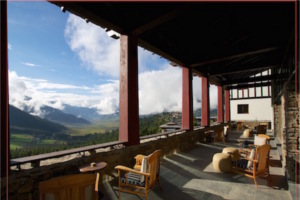
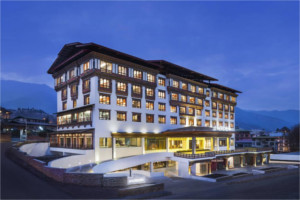
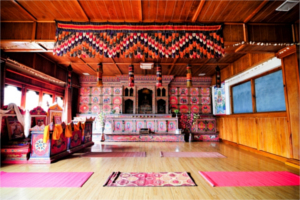
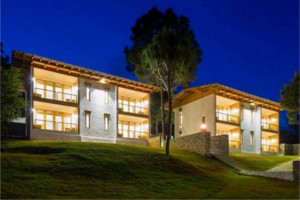
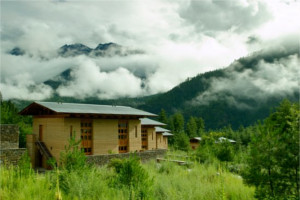
Our representative will receive you at the airport and then transfer to a restaurant for lunch. Paro is at altitude 7000 feet or 2133m. Paro valley is a small yet beautiful home to many of Bhutan’s oldest monasteries and temples. The country’s only international airport is in Paro. The valley is also home to mount Jhomolhari (7300 meters), second highest unclimbed mountain in the world situated at the northern end of the valley whose glacial water forms the Paachu, the main river flowing through the valley. After lunch, visit the National Museum and Paro Rinpung Dzong and drive to Thimphu, the capital of Bhutan.
Overnight at Thimphu
Breakfast
Visit the National Memorial Chorten (Stupa), built in memory of the 3rd King of Bhutan. Visit the Art School and Changangkha Lhakhang (a temple built in 12th century by a Tibetan saint).
Lunch
Visit the National Takin Reserve Center to see Takin, the national animal of Bhutan and Trashichhodzong (fortress of glorious religion). Trashichhodzong in its current form was completed in 1968 and it houses the throne room of His Majesty the King of Bhutan. It is also a center of monastic body and houses main secretariat building. The majestic Dzong located along the Wangchu (Thimphu River) has a Tendrel Thang which is the venue for Thimphu Dromchoe and Thimphu Tsechu, the annual Thimphu Festival where thousands of people fill the courtyard to witness the mask dances, traditional dances, and many more.
Visit Semtokha Dzong, five miles from main Thimphu town, the Dzong is considered to be the first ever built by Zhabdrung Ngawang Namgyel in 1629, therefore the oldest fortress in Bhutan. Located on a ridge overlooking the entire valley, the Dzong houses a chapel for protective deities Yeshe Goenpo (Mahakala) and Palden Lhamo of Bhutan.
Stop at Dochula pass 3100m on route to Punakha from Thimphu. Dochula pass is one of the famous landmarks in Bhutan from which one can sight the Himalayan Range of Bhutan on clear winter days. The place is adorned with Druk Wangyel Chorten, 108 stupas built to honor the 4th king of Bhutan and bring peace to the region. The stupas were built under the patronage of Ashi Dorji Wangmo Wangchuck.
Descend to Punakha Valley (1280m).
Punakha valley served as the capital of Bhutan till 1955 until it was shifted to Thimphu. The Punakha Dzong is still the winter seat of Je Khenpo (Chief Abbot) of the monastic body as the place has a temperate climate with Phochu and Mochu Rivers flowing through the fertile fields of the valley.
Visit Punakha Dzong.
Punakha Dzong or Pungthang Dewa Chenpai Phodrang, the palace of bliss was built in 1937 by Zhabdrung Ngawang Namgyel. The second oldest Dzong is religiously and architecturally significant to Bhutanese as it houses several sacred relics, scriptures, statues and is the place where the first king of Bhutan was crowned in 1907. Punakha Dzong is also famous for Punakha Drupchen where the 17th-century battle scene with Tibetan invaders are recreated and is followed by Punakha Tsechu where grand Thongdrel of Guru Rinpoche is unfurled with costumed mask dances and rituals.
Overnight at Punakha
Drive to Paro via Dochula pass.
Visit Chimmi Lhakhang, the temple of Lama Drukpa Kuenley (The Devine Mad Man). Chimmi Lhakhang was built in 1499 by Lam Ngawang Chogyel on the spot where Lama Drukpa Kuenley subdued a demon who was fleeing away in form of a dog and buried the demon naming the spot as khe mae (no dog now). Hence the temple was named Temple of no dog (Chimmi Lhakhang)
Lunch at Dochula Pass or Thimphu Town.
Drive to Paro.
Visit Kyichu Lhakhang, the oldest temple in Paro. Originally built in 7th century by Tibetan Emperor, it’s one of the 108 temples he built in the region. The temple is believed to have spiritual treasures concealed by Guru Padmasambhava and the two orange trees in the courtyard defy the natural way of orange trees usually growing in lower altitude and it’s believed to bear fruit throughout the year.
Early breakfast.
Hike up to Paro Taktsang, the famous Tiger’s Nest. Perched on the cliff side at height of 900m above the Paro valley, the 3hr hike is the most trodden route in Bhutan as every visitor land up visiting the landmark. It is believed that Guru Padmasambhava flew on this site on a Tigresses back and meditated there for months eventually bringing Buddhism to Bhutan.
Drive to Drugyel Dzong.
Drugyel Dzong, the victory fortress located in the northern part of Paro was built in 1649 to honor the victory of Zhabdrung Ngawang Namgyel over invasion from Tibet. But in the 1950s the Dzong was completely destroyed by fire and in 2016 in celebration of the birth of Gyalsey, the Dzong was announced to be built to its former glory. The Dzong site offers imposing view of Mt. Jhomolhari, the second highest unclimbed mountain in the world.
Visit a farmhouse and spend leisure evening.
Farewell dinner along with cultural dance and songs performances.
daily tariff:USD 250 Per person per night
surcharges:
Solo Traveller: USD 40 per night
Dual Traveller: USD 30 per person per night
Three travellers and above: surcharges not applicable
Visa fees: One time payment of USD 40 per person.
daily tariff:USD 200 Per person per night
surcharges:
Solo Traveller: USD 40 per night
Dual Traveller: USD 30 per person per night
Three travellers and above: surcharges not applicable
Visa fees: One time payment of USD 40 per person.
A minimum of 3 star accommodation (4 & 5 star may require an additional premium).
All meals
A licensed Bhutanese tour guide for the extent of your stay
All internal transport (excluding internal flights)
Camping equipment and haulage for trekking tours